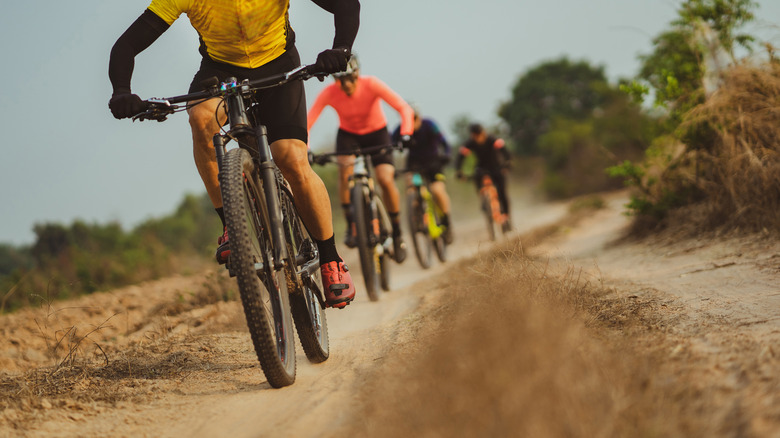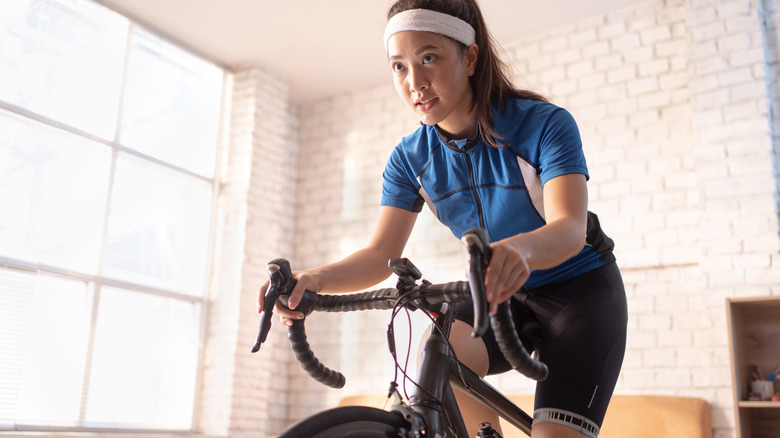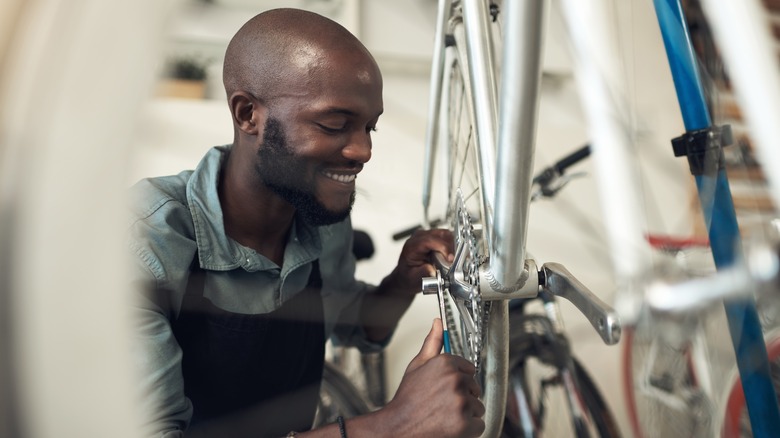How To Prevent A Stiff Neck When Cycling
Show of hands — have you ever experienced a sore or stiff neck after a long weekend bike ride? While it can be extremely uncomfortable and painful, neck pain and back pain are two of the most common complaints from recreational bikers. Because cycling requires you to hold a low and long position for an extended period of time, it can put a lot of unwanted stress on your neck, points out Cycling Weekly. This stiff neck when cycling is also a subtle cue that something is not quite right with your posture or the bike itself (per Cleveland Clinic).
For instance, overuse of the cervical extensors (i.e. the muscles that hold your neck up) may overly fatigue them (per Cycling Weekly). On the other hand, weak core stability or a stiff upper back can lead to poor posture when cycling, which can also potentially create neck pain. This means that whether you're cruising across town or cycling cross country, a good posture is crucial for having a pain-free ride. Luckily, there are certain factors that help prevent a stiff neck when cycling. Let's find out what these riding tips are.
Tuck your chin and pull your stomach in
Having the proper form when cycling (or performing any other type of exercise for that matter) is extremely important. It can make all the difference between preventing an injury and optimizing your workout. When it comes to cycling, improper form happens when your head is tilted upwards, causing your nerves to pinch, points out Cleveland Clinic. This position can also irritate neck arthritis and potentially bring about spinal stenosis.
The fix here is to always assume a comfortable spine position and to be mindful of your mechanics, shares Spine Universe. Lean forward, angle your face downward, and move your eyes to direct your gaze forward instead of your neck, explains Selle Anatomica. As you lean forward, it's also important to activate your core. Cleveland Clinic suggests pulling your stomach muscles in and focusing on lengthening your torso too. At the same time, tuck your chin in and lift your chest up slightly. This will ultimately help you view the road and prevent a stiff neck when cycling. And don't forget to adjust your helmet for comfort and fit. Not only will this help prevent an injury, but it may potentially help with neck pain.
Adjust your handlebars' height and reach
Next you'll want to focus on setting your bike up for success. Whether your bike is old or you're buying some new wheels, consider visiting a local bike shop to fine tune your bike. "The best way to avoid problems with your neck is appropriate adjustments of your handlebars and your saddle, to put your whole spine in a good position," spine specialist Dr. Michael Schaefer tells Cleveland Clinic. This will allow the bike to be adjusted to your body type so you can feel more comfortable on the road.
When it comes to adjusting the handlebars and saddles, Cycling Weekly suggests first shortening the stem (aka the part that connects the handlebars to the front wheel), but only if you're comfortable with your cycling abilities. Then consider narrowing and adjusting the reach of the handlebars. This will further adapt the bike to fit your body and prevent a stiff neck when cycling. Raising the handlebar height may also help since it decreases the neck extension necessary to keep an eye on the road. However, if you can't raise the height high enough for a comfortable fit, this may mean you need a bike that's a better size and fit for your body.
Stretching and strengthening exercises may also help with neck pain. Physiopedia recommends stretching muscles like the neck flexors and trapezius. For neck strengthening exercises, they suggest focusing on the core muscles, the trapezius, the cervical spine muscles, and deep neck flexors.



